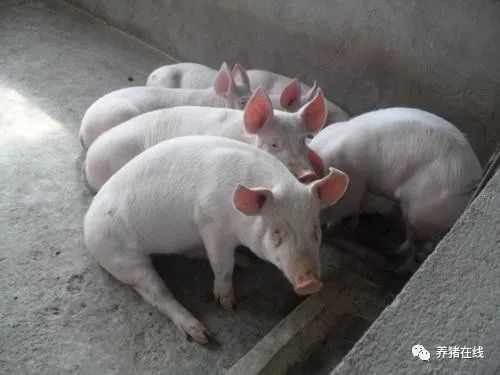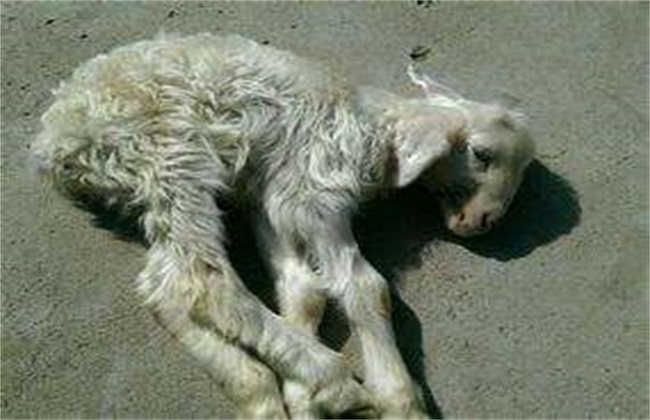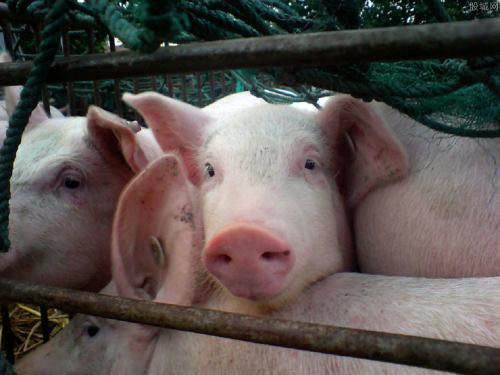paralysis Learn more about paralysis
-
Can postpartum paralysis of domestic sows be cured? How should it be prevented and treated?

Paralysis generally refers to the decrease or loss of voluntary motor function, which occurs in both humans and animals, such as pigs, one of the livestock, after giving birth. Can the postpartum paralysis of that sow be cured? How should it be prevented and treated? 1. Mother
2020-11-11 Domestic sow postpartum paralysis treatable okay should how -
Causes and prevention methods of duck paralysis

Causes and prevention methods of duck paralysis
2018-09-07 -
Sows paralyzed what needle to hit, need to be clear after treatment

Paralysis of sow needs to be diagnosed before treatment, after paralysis needs to be detected, diagnosed and treated early, if the disease is mild, VD3 can be injected intramuscularly, the dose is about 6-8 mg, once every 3 days, continuous injection
2020-11-08 sow paralysis hit what needle need clear condition later -
Quick Cure Method for Cow Paralysis

Curing cow paralysis can pump up air in cow udder, increase udder air pressure, reduce inflow of blood, and thus increase blood calcium level. This method is the most effective and simple method to treat postpartum paralysis of cow. Calcium, vitamins and fish liver can also be added to feed or drinking water
2020-11-09 quick cure cow paralysis method available in -
Local methods for the treatment of sow paralysis

Sow paralysis can be treated with sodium sulfate or magnesium sulfate laxative enema, removal of feces in the rectum, intravenous injection of 10% calcium gluconate 50-150ml, and massage with straw handle or rough cloth on the skin of diseased pigs to promote the recovery of blood circulation and nervous function. It is necessary to treat sow paralysis.
2020-11-11 Treatment sow paralysis soil method treatment -
What if cattle production is paralyzed?

What if cattle production is paralyzed?
2018-09-07 -
The cause of sudden paralysis and collapse of pigs

The cause of sudden paralysis and collapse of pigs
2018-08-09 -
How is it that a pig can't stand up or walk on its legs?

How is it that a pig can't stand up or walk on its legs?
2020-06-09 -
An empirical prescription for treating postpartum paralysis of pigs and sheep

First, treat postpartum paralysis of sows. Postpartum paralysis of sows mostly occurs within 2-5 days postpartum. At the beginning of the disease, the spirit is depressed, appetite decreases, lactation decreases, and body temperature is normal or slightly elevated. Light standing difficulty, hindquarters swaying; typical can not stand, lie down lethargic. During the treatment, 4% bone powder, AD3 powder and trace element additives were added to the feed. Diseased pigs were injected intramuscularly with 3-5 ml of vitamine calcium and 5-10 ml of vitamin E injection (twice a day); vitamin D 3600-1200 international units, once a day, or take appropriate amount of raw
2019-01-16 -
How to treat lamb paralysis

How to treat lamb paralysis
2019-04-26 -
Causes and prevention methods of postpartum paralysis in cows

Causes and prevention methods of postpartum paralysis in cows
2018-09-07 -
The cause of sow paralysis?

The cause of sow paralysis?
2020-09-12 -
Etiological Analysis and differential diagnosis of Chicken leg Diseases

In the process of feeding, chickens often suffer from leg diseases such as soft feet, claudication, paralysis, squatting and unwilling to walk, deformed legs and paws and paralysis. The causes of leg diseases in chickens are extremely complicated. Leg disease is mostly a symptom of a disease, or a type of disease, a very small number of independent diseases, which some people call foot weakness syndrome. The occurrence of leg disease in the flock directly affects the uniformity of the flock and improves the abandonment rate and sporadic mortality of the flock. In this paper, the etiology and characteristics of chicken leg disease are summarized as follows. Chicken leg
2019-01-16 -
Prevention and treatment of lumbar paralysis in sheep

Lumbar paralysis of sheep is caused by a kind of filamentous nematode larvae, which is transmitted to sheep by mosquito bites and parasitic in the brain and spinal cavity of sheep, which is characterized by lumbar or hindquarters paralysis. The disease often occurs in the eighth, ninth and thirteenth months of the Gregorian calendar. Symptoms: hindquarters movement disorder suddenly occurs when the sheep is infected with filamentous filamentous larvae. At the beginning, he walks unsteadily, swings, falls easily, and cannot stand up by himself after falling. Do not make a sharp turn and retreat, the sick sheep can not afford to lie on the ground, showing the dog sitting position, forelimbs
2019-01-16 -
The sow is paralyzed after delivery, how to do? Prevention and control measures should be kept in mind!

The sow is paralyzed after delivery, how to do? Prevention and control measures should be kept in mind!
2020-10-12 -
Treatment of bovine cold paralysis

Treatment of bovine cold paralysis
2018-07-06 -
A new method for the treatment of postpartum paralysis in ewes with weak pain, deep and slow coma

A new method for the treatment of postpartum paralysis in ewes with weak pain, deep and slow coma
2018-07-11 -
Causes, prevention and treatment of calcium deficiency paralysis in sows

Causes, prevention and treatment of calcium deficiency paralysis in sows
2018-07-14 -
Causes and prevention methods of postpartum paralysis in ewes

Causes and prevention methods of postpartum paralysis in ewes
2018-09-18 -
Three ways to prevent and cure sow paralysis

Sow paralysis is a metabolic disease, which is easy to occur under the conditions of extensive feeding and management and poor feed conditions. After the occurrence of the disease, it not only affects the utilization value of sows, but also affects the quality of piglets, resulting in great losses to production. Based on years of clinical experience, the author has achieved satisfactory results in the treatment of sow paralysis with acupuncture combined with traditional Chinese and western medicine, which is introduced as follows for the reference of readers. 1. The cause of the disease mainly occurs in the postpartum and lactation process of sows.
2019-01-15
